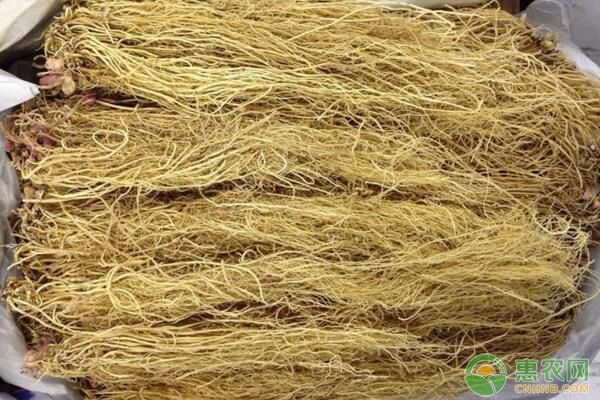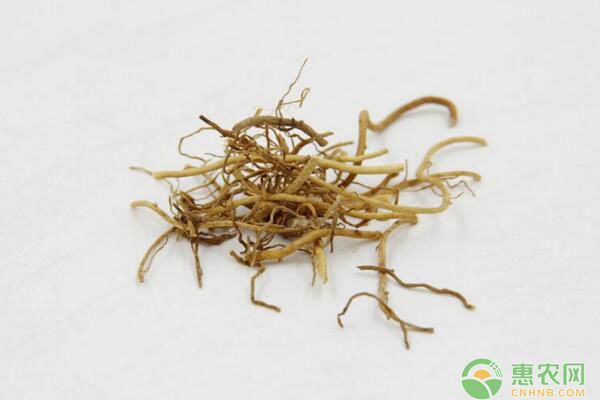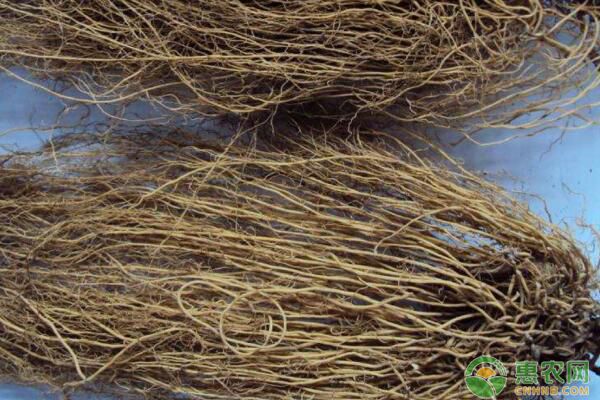Biological characteristics and cultivation techniques of Chinese medicine Liao Xixin
The Chinese medicine L. sinensis is a perennial herb. The model specimens are collected from northeastern China and distributed in Heilongjiang, Jilin, Liaoning and other places in China. They have the effects of dispelling cold and hurricane, relieving pain, warming lung and drinking, mainly treating headache, toothache and rheumatism. Pain, sputum, cough and other diseases, followed by Xiaobian to specifically talk about the biological characteristics and cultivation techniques of Chinese medicine Liao Xixin.

Biological characteristics
1.1 Seed habits
The quality of the seeds of Liaojingxin fresh seeds is 16--17 g, which is usually sown in July. The radicle is exposed in mid-August, and the radicle is more than 7 cm in the middle and late October. It is about 50 d in the low temperature condition below 0 °C. In order to break the dormant emergence.
1. 2 plant growth and development
Seeds are planted in the same year, and in the second year, two seedlings grow out in spring, and in the third year, a true leaf grows. In the fifth and sixth years, 2-3 true leaves are blossomed and fruited. The adult plants return to spring after the second year. Flowers and leaves are released.
2. Cultivation techniques
2. 1 Land selection and site preparation
2. 1. 1 Selecting land: Selecting a land with flat terrain, good drainage, and fertile soil is good and the water source is sufficient. The light intensity is 50% to 60% of natural light, and the canopy density is 40% when planting under forest. -50% of the forest stand, or cultivated in open space and forest edge; if the terrain does not exceed 200 on the shady slope or semi-shady slope, the loam with rich humus, loose texture and fertile soil should be selected, avoid drought, low terrain and sticky Indifferent soil.

2. 1. 2 Soil preparation: cultivation in farmland, the depth of cultivation is 15-20 cm. It can be combined with the land and the base fertilizer, and the farmyard manure or pig manure per 667 m2 is 1 000-3 000 kg. 0 ~ 1. 2 m 畦, generally 10-15 m long, 25 cm high. The working track is about 50 cm wide.
2.2 sowing seedlings
2. 2. 1 Seed collection: Seed maturity is not expected, but it must be done with the harvest. When the fruit changes from reddish purple to pinkish white, the seeds are yellowish brown. It is suitable for picking without milk. After picking, put it in the dark for 1-2 d. After the peel becomes soft powder, remove the peel and dry it. Fresh sowing.
2. 2. 2 Seed treatment: using sand burial treatment, mix fresh seeds with 5-10 times wet sand or humus soil, and put them in a woven bag buried in the shade of the ground. The cover soil should be slightly higher than the ground. Take out the seeding.
2. 2. 3 sowing: planting in early July, divided into two types of seeding and sowing, the amount of fresh seeds is 110-130 g/m2.
2.3 transplanting
2.3.1 Transplanting period: The 2-3 year old Liao and Xin Shuang Miao seedlings cultivated in farmland can be transplanted, and transplanted into spring planting and autumn planting. In spring, transplanted leaves are unearthed before the whole layer of soil is unfrozen. Therefore, after the leaves are spread, they are transplanted by water. In autumn, they are transplanted in October. When the leaves of the seedlings are withered, they are transplanted during dormancy. Adopt autumn transplanting.

2 3. 2 transplanting method: planting under the forest can adopt the method of hole planting to reduce the damage to the forest vegetation, and at the same time, measures to prevent soil erosion should be done. The specific methods are: selection of seedlings, root system integrity, no pests and diseases 2 3 years old seedlings, the row spacing is 20 cm X 20 cm, the depth of the hole is about 10 cm. When planting, the roots of the seedlings are stretched out and fanned out. 2 plants/points are suitable, covering soil 3-5 cm. Avoid heavy rain and soil compaction.
3. Field management
Farmland cultivation: weeding 2-3 times a year to ensure that there are no weeds in the seedlings, and prevent grasshoppers from being bullied; when the soil is short of water, it should be watered in time to promote the growth of seedlings; every year, in the beginning of June, the fertilizer is applied once. Calcium 0.5kg/10m2, combined with cold-proof winter in the early winter, and then covered with manure, need to apply 2,000 m2 per 667 m2, apply 2 000 kg; repair the scorpion before winter, cover the litter to prevent frost damage, remove the cover from Hunchun Planting; under-forest cultivation: 2-3 times of loosening and weeding every year from June to August.
4. Pest control
Common pests and diseases include Sclerotinia sclerotiorum, black caterpillars, and ground tigers. Sclerotinia sclerotiorum can be watered to the roots with a mixture of 50% dexamethasone 0. 125% and 10% carbendazim 0.5%, or sprinkled with 50% Zinc 0. 2 5% concentration of the solution for prevention; black caterpillars can be sprayed on the leaf surface with 0.1% wettable trichlorfon solution, the ground tiger can be used to poison the soil, poison bait to kill.
5. Harvest time
The Liaoxinxin transplanted under the forest can be received after 3-4 years of planting, and the harvesting period is from August to September.
An organic compound formed by dehydration of amino acids, containing carboxyl and amino groups, and being amphoteric. Also known as "peptide".
Two, one of the amide. It consists of two or more amino acids joined by the amino group of one amino acid to the carboxyl group of the other. An amino acid cannot be called a peptide, nor can a peptide be synthesized, but must be a compound of two or more amino acids linked by a peptide bond. Compounds where two amino acids are linked by a peptide bond are called dipeptides; A compound with three amino acids linked by peptide bonds is called a tripeptide, and so on, a compound with thirty-four amino acids linked by peptide bonds is called a thirty-four peptide.
A peptide is a chain of polymers of amino acids
A peptide is a chain of polymers of amino acids
Three, is related to the biological body of a variety of cell functions of biological active substances. Hundreds of peptides have been found in living organisms, which are essential participants in the body's complex physiological activities. All cells can synthesize peptides and their functional activities are regulated by peptides. It involves hormones, nerves, cell growth and reproductive fields, and its importance lies in the regulation of various systems, organs and cells in the body. The physiological and pharmacological effects of enzymatic polypeptides are mainly to activate related enzymes in vivo, promote the permeability of intermediate metabolic membrane, or affect specific protein synthesis by controlling DNA transcription or translation, and eventually produce specific physiological effects or play their pharmacological effects. Peptide is better than amino acid, one is faster than amino acid absorption; Second, it is absorbed by the body in a complete form; Third, active absorption (amino acids are passive absorption); Fourth, low consumption, compared with amino acids, peptide absorption has the characteristics of low consumption or no energy consumption, peptide absorption through the duodenum, directly into the blood circulation, their own energy nutrition transported to various parts of the human body; Fifth, peptide absorption is less than amino acid, with the characteristics of unsaturated; Sixth, there are only 20 kinds of amino acids, with countable functions, while peptides take amino acids as substrates, which can be synthesized into hundreds of thousands of kinds.
It is mainly divided into medical polypeptide drugs, peptide antibiotics, vaccines, antimicrobial peptides for agricultural use, small peptides for feed, cosmetics for daily use, soybean polypeptides for food, corn polypeptides, yeast polypeptides and sea cucumber peptides.
From the functional point of view, can be divided into antihypertensive peptide, antioxidant peptide, cholesterol lowering peptide, opioid active peptide, high F value oligopeptide, food strong taste peptide and so on.
Active peptide, and nutrition, hormone, enzyme inhibition, regulation of immunity, antibacterial, antiviral, antioxidant has a very close relationship. Polypeptides are generally divided into: polypeptide drugs and polypeptide health products. Traditional peptide drugs are mainly peptide hormones. The development of peptide drugs has been developed into various fields of disease prevention and treatment, especially in the following fields. [2]
Antitumor polypeptide
Tumorigenesis is the result of many factors, but ultimately all involve the regulation of oncogene expression. In 2013, many tumor-related genes and regulatory factors have been discovered. Screening peptides specifically bound to these genes and regulatory factors has become a new hot spot in the search for anticancer drugs. For example, somatostatin has been used to treat endocrine tumors of the digestive system; American scholars found a hexapeptide can significantly inhibit adenocarcinoma in vivo; Swiss scientists have discovered an octapeptide that induces apoptosis in tumor cells. [2]
Antiviral polypeptide
By binding to specific receptors on host cells, viruses adsorb cells and rely on their own specific proteases for protein processing and nucleic acid replication. Therefore, peptides binding to host cell receptors or active sites such as viral proteases can be selected from the peptide library for antiviral therapy. In 2013, many small peptides with antiviral properties have been screened from peptide banks in Canada, Italy and other countries, and some small peptides have entered the stage of clinical trials. In June 2004, the Chinese Academy of Sciences institute of Microbiology came out of the news, which was undertaken by the Chinese Academy of Sciences known
buy peptides,peptides benefits,peptides bpc 157,peptides buy,peptides cjc 1295
Shaanxi YXchuang Biotechnology Co., Ltd , https://www.peptidenootropics.com